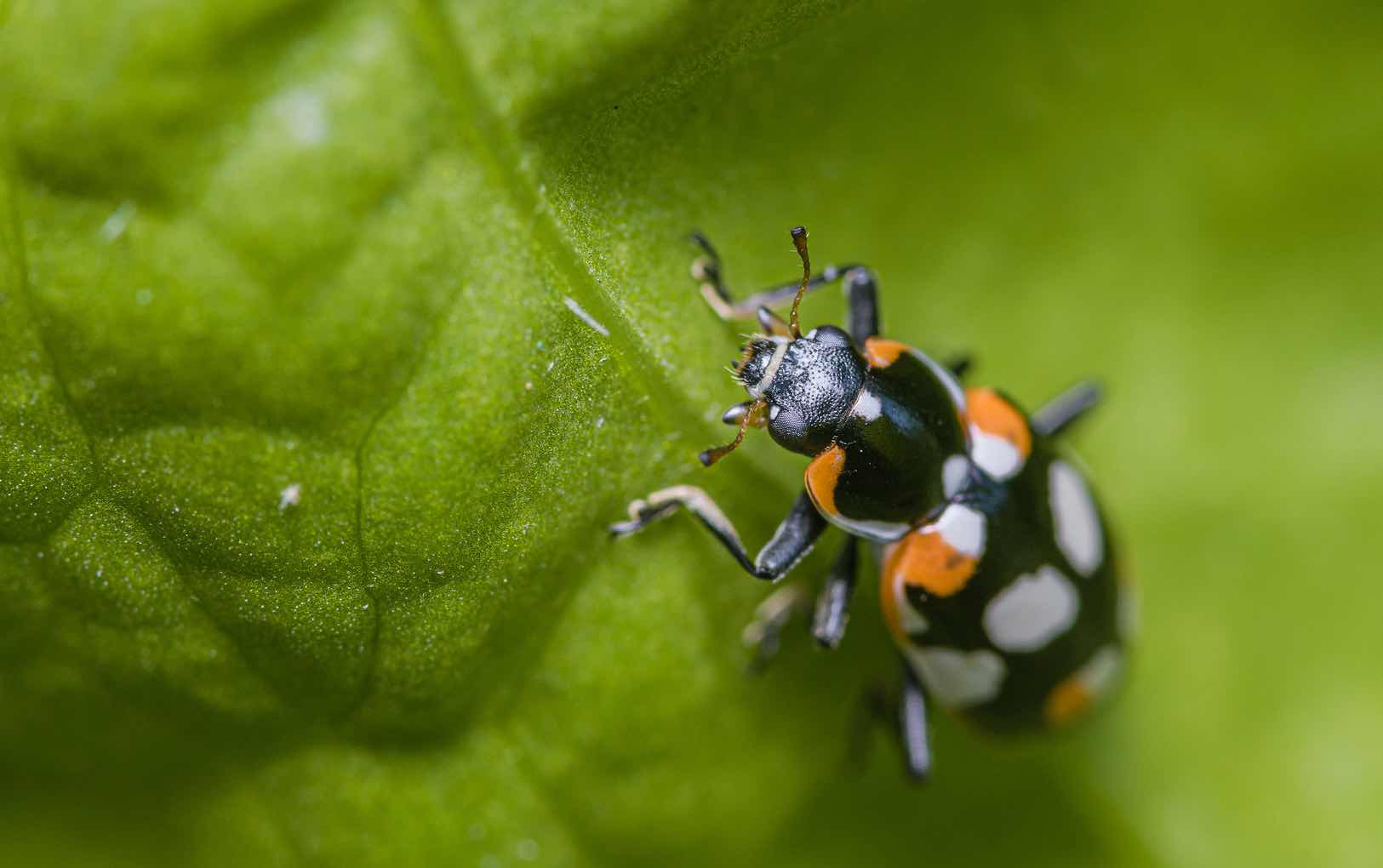Given that agriculture is a major contributor to climate change, measuring greenhouse gas (GHG) emissions from various agricultural sources is important to track sustainability commitments and develop mitigation strategies. Several analyses have focused on the carbon footprints of nitrogen fertilizers, but relatively few assess synthetic pesticides—drivers of biodiversity loss that are often applied excessively and inefficiently.
In a recently published Comment in Nature Food, researchers from IFPRI/Mitigate+, the University of Queensland, Australia, and the UN Food and Agriculture Organization (FAO), gauge the carbon footprint of pesticide use globally. Our analysis shows that pesticide manufacture, distribution, and application jointly account for annual emissions of 19.9 million metric tons carbon equivalent (MtCe)—equal to the yearly output of 18.4 coal-fired power stations. Although this carbon footprint may seem relatively small, pesticide use has synergistic impacts that extend through agrifood systems.
There are clearly opportunities for substantial reduction. Countries such as the United States and Brazil have the world’s largest pesticide carbon footprints, because their large agriculture sectors rely extensively on chemical pesticides. Usage levels are also increasing exponentially in biodiversity-rich countries such as Cambodia and Indonesia—where carbon footprints are compounded by the grave environmental impacts of pesticides.
How can these problems be addressed? Integrated Pest Management (IPM) can safeguard crop yields from pests and diseases, while restoring ecosystem functions and reducing energy consumption. IPM prioritizes non-chemical preventive tactics and ecologically based approaches such biological control.
Biological control draws on nature itself to resolve pest or disease problems by protecting or augmenting on-farm populations of beneficial organisms, such as pest-killing micro-wasps, predatory beetles, or insect viruses. Harnessing biodiversity for pest management can drastically reduce pesticide use, mitigate environmental impacts, and alleviate the social and economic costs of crop protection.
When judiciously implemented, IPM is effective and can slash the energy intensity of crop protection. In recent decades, biological controls and other agro-ecological methods systematically promoted through United Nations-backed IPM programs reduced pesticide use by 70%-90% on millions of farms in Asia. In addition to mitigating GHG emissions, these programs increased crop yield by 4%-25% and raised farm revenue by 20%. Recent work in the U.S. Midwest even shows that IPM can cut pesticide use by up to 95%, while bolstering farm-level profitability—outcomes that should catch farmers’ attention.
Biological control often involves establishing ecological infrastructures such as cover crops, hedgerows, or flower strips—which further contribute to carbon sequestration and soil conservation. These controls can increase the overall resilience of farming systems to external (biotic, abiotic) shocks and “climate-proof” agrifood supply chains. Given rapid increases in weather extremes and climatic uncertainty, this extra benefit of biodiversity-driven crop protection can be particularly valuable for farmers.
As ecologically-based crop protection yields substantial and verifiable reductions in GHG emissions, it becomes an appealing target for investment. Carbon accounting is a key element for unlocking innovative financing; money can be routed through carbon markets and used as payment for ecosystem services, as natural capital investment, or as capital earmarked for low-carbon investment. There is also huge potential to repurpose a portion of current government support for the agriculture sector (valued at $600 billion per year globally) as incentives for nature-based crop protection.
Biological control can also be a market-driven solution. Hundreds of small companies mass-produce biological control agents and put those at farmers’ disposal. Tiny ladybugs, caterpillar-killing viruses, and weed-eating bacteria are all cultured in specialized laboratories around the globe, representing a true bonanza for low-carbon crop protection. Many start-ups have also placed their bets on robotic weeders, behavior-modifying chemicals, or antibody technologies. These enterprises merit tax breaks, loan programs, or subsidies.
The renewables sector offers a model in the form of taxation, crowdfunding, and green or hybrid bond financing for these alternative approaches to pesticides. Mutual funds or innovative pest insurance schemes can engage loss- or risk-averse farmers by covering unforeseen shortfalls or the fixed costs needed to establish robust ecological infrastructures. Such measures can be paired with farmer education and efforts to raise awareness across the food value chain. Consumer behavior can also play an important role in these changes; Viet Nam’s rapidly growing middle class is even willing to pay a 70% price premium for certified pesticide-free food baskets.
Through a broad combination of efforts, low-carbon crop protection can curb or even entirely replace synthetic pesticide use, leading to broad societal benefits. Biodiversity-driven crop protection helps meet the objectives of climate mitigation, biodiversity conservation, and human health—generating resoundingly positive impacts, large and small. Clearly, more funds are warranted to take it to scale.
Kris A.G. Wyckhuys is a bio-science engineer, insect ecologist, and consultant based in Viet Nam.







